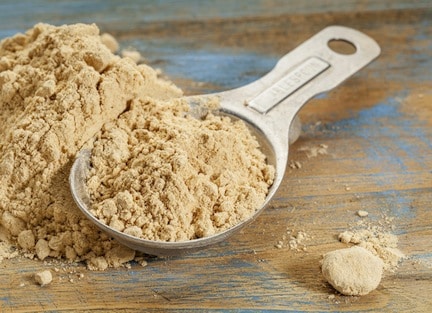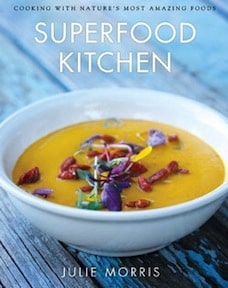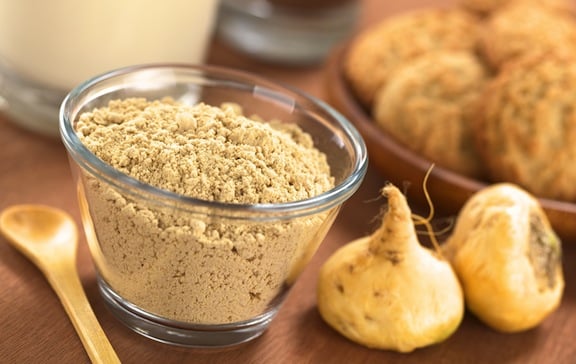
Maca, a root that belongs to the radish family, is most commonly available in powder form. Grown in the mountains of Peru, it has been called “Peruvian ginseng.” Maca’s benefits have been long valued, and has recently been popularized as a supplement and food ingredient.
There are no serious known side effects of maca, but like any other supplement it should not be taken in large amounts. When you first start using maca, it’s best to begin by taking smaller amounts and building up; even 1/2 teaspoon is a good place to start. And at the other end, 1 tablespoons (of the powder) is an average daily dose. Rotating a few days on and a few days off is often recommended. Taking too much can lead to adverse effects and throw your hormones out of whack. If you experience this, you should take less or wean yourself off completely.
Maca is good in smoothies, salads, drinks, cooked foods, and juices. Don’t add it to anything that’s very hot because it will lose all its benefits. The taste can be a bit odd at first but it gets more tolerable and it depends on what you mix it with. Its flavor has been described as “malted” or like toasted oats. Smoothies, puddings, raw sweets, and juices seem to be the best ways to use maca powder. Capsules are best to get past the taste.
 Please be aware that other than the nutritional benefits provided by the vitamins and minerals, the other benefits are anecdotal, as maca has not been formally studied.
Please be aware that other than the nutritional benefits provided by the vitamins and minerals, the other benefits are anecdotal, as maca has not been formally studied.
A great resource that includes a lot of information on maca, as well as how to incorporate it into recipes, is Superfood Kitchen by Julie Morris. This beautiful book also includes lots of others superfoods in addition to maca, including berries, seeds, grasses, green leafy veggies, and more.
And if you’d like to compare various brands of maca, you can do so by exploring this page on Amazon.com .
.
1. VitaminsMaca is rich in vitamin B vitamins, C, and E. It provides plenty of calcium, zinc, iron, magnesium, phosphorous and amino acids.
2. Sexual functionMaca is widely used to promote sexual function of both men and women. It serves as a boost to your libido and increases endurance. At the same time it balances your hormones and increases fertility.
3. Women’s health and moodMaca relieves menstrual issues and menopause. It alleviates cramps, body pain, hot flashes, anxiety, mood swings, and depression. If you are pregnant or lactating you should avoid taking maca.
 4. EnergyWithin days of using maca your energy level may increase. It is also known for increasing stamina. Many athletes take maca for peak performance. If you find yourself tired most of the time, experiment with maca to see if it helps. Just a small amount could be exactly what you need for a boost!
4. EnergyWithin days of using maca your energy level may increase. It is also known for increasing stamina. Many athletes take maca for peak performance. If you find yourself tired most of the time, experiment with maca to see if it helps. Just a small amount could be exactly what you need for a boost!
5. General healthMaca helps your overall health in a number of ways. It supplies iron and helps restore red blood cells, which aids anemia and cardiovascular diseases. Maca keeps your bones and teeth healthy and allows you to heal from wounds more quickly. When used in conjunction with a good workout regime you will notice an increase in muscle mass.
But be very cautious if you have a cancer related to hormones like testicular and ovarian, among others. If you have liver issues or high blood pressure you should ask your doctor before taking maca.
6. SkinMany people take maca for skin issues, as for some people it helps to clear acne and blemishes. Another benefit for your skin is that is decreases sensitivity. In hot or cold weather, maca may help your skin withstand extreme temperatures.
7. Mood balanceIf you find yourself overcome with anxiety, stress, depression or mood swings, maca may help alleviate these symptoms, though of the evidence is anecdotal. Some have reported an increase in mental energy and focus.
- For more tips on plant-based nutrition, make sure to browse VegKitchen’s Nutrition page.
Read more at http://www.vegkitchen.com/nutrition/7-top-health-benefits-of-maca/#usXpw1fqtyukLzqb.99
http://www.vegkitchen.com/nutrition/7-top-health-benefits-of-maca/


